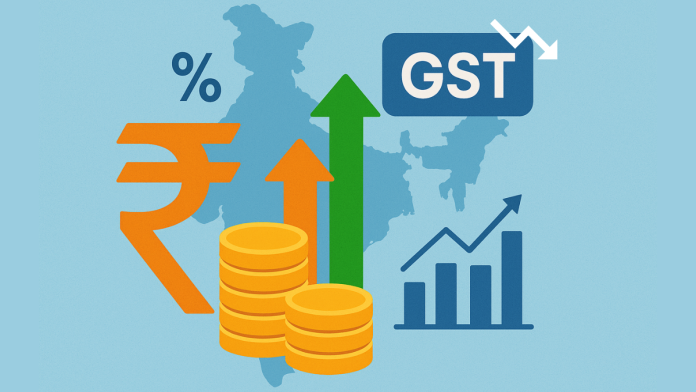Prime Minister Narendra Modi announced a major change in India’s goods and services tax (GST) system during his Independence Day speech. The move reduces the number of GST categories from four to just two. Until now, India’s GST had four main tax rates—5%, 12%, 18%, and 28%. Under the new proposal, most goods taxed at 12% will shift to the lower 5% rate, while several items from the 28% bracket will move down to 18%.
Officials explained that the aim of this reform is to simplify taxation, encourage consumption, and support small businesses. Two-thirds of GST revenue currently comes from the 18% category, which means government finances will not face a large setback. At the same time, consumers may benefit from lower prices on basic goods, such as food and daily-use items, which are expected to see a boost in demand.
The new rates are expected to be reviewed by a group of state finance ministers before being placed before the GST Council, which is chaired by Finance Minister Nirmala Sitharaman. The GST Council holds the final authority on changes to tax rates. According to government officials, the adjustments are planned to be rolled out within the current financial year.
Trump says India has reduced Russian oil imports and warns of secondary tariffs
Limited Impact on Government Revenue
Economists have estimated the effect of these tax cuts on India’s economy. Research by IDFC First Bank suggests that the reduced tax burden may lift nominal economic growth by around 0.6 percentage points. At the same time, inflation could ease by 0.6 to 0.8 percentage points over the next 12 months. Analysts believe this could provide relief to consumers already facing rising costs.
However, there is also an expected short-term decline in revenue. Emkay Global Financial Services has projected that the government could lose around 0.4% of gross domestic product (GDP) in tax revenue. The states may face a larger share of this shortfall compared to the central government. Despite this, officials stressed that the losses may be offset by increased consumer spending, as cheaper goods could lead to higher demand.
Experts highlighted that simplifying GST had been debated for years. The timing of the announcement came as a surprise to many, especially since the changes were announced on a national holiday. Economists say this reform may support domestic demand at a time when global trade tensions are rising.
Tax Cuts Announced Amid Rising US Tariffs
The tax cuts come as India faces fresh trade challenges. The United States, under President Donald Trump, recently announced a plan to double tariffs on Indian exports, raising duties from 25% to 50% starting August 27. These measures were introduced as a penalty over India’s oil purchases from Russia.
US warns India of higher secondary tariffs if Trump-Putin talks fail in Alaska
Analysts, including those from Citigroup, have warned that higher tariffs could lower India’s growth by 0.6 to 0.8 percentage points. With consumer and business spending making up more than 60% of India’s GDP, the government sees stronger domestic consumption as a way to balance out the external pressure.
The announcement of GST reforms also coincided with a ratings upgrade for India. S&P Global Ratings raised the country’s sovereign rating to BBB, the first such upgrade in nearly two decades. The agency noted that US tariffs would have a “manageable” impact on India’s economy, especially as it is largely driven by local consumption rather than exports alone.
Government officials highlighted that the twin developments—a ratings upgrade and the tax cut—will help keep India’s economy stable. They also underlined the importance of self-reliance in critical areas like energy, defense, and minerals, signaling a push for reducing dependence on imports.


